The Benefits and Drawbacks of Space Tourism – A 2021 Guide
The Benefits and Drawbacks of Space Tourism – A 2021 Guide
“Space travel is returning to where it started: with maverick pioneers dreaming of journeys to orbit and beyond, some carrying out rocket experiments in their own backyards. The rise of citizen astronauts has already begun.”
Arthur C Clarke Forward to SpaceShipOne: An Illustrated History 2008
Since private individuals first started visiting the International Space Station (ISS) in 2001 via the Space Adventures company, the dream of being able to travel into space for the masses is slowly becoming closer to reality.
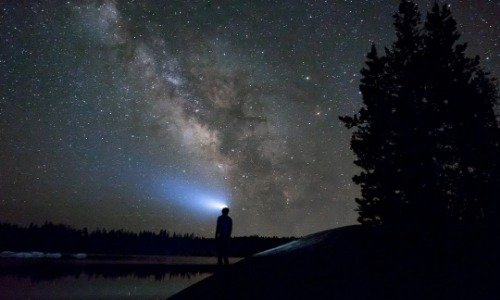
So far seven space tourists have gone into orbit on Russian Soyuz spacecraft for a week-long stay on the ISS 400km above the Earth and for the future that number will expand. During 2021 both Sir Richard Branson of Virgin Galactic and Jeff Bezos of Blue Origin flew into sub-orbit “near-space”, with Branson reaching over 50 miles altitude in the “Unity” SpaceShipTwo vehicle and Bezos achieving over 62 miles height in the New Shepard capsule.
In the USA, 50 miles is the set definition of where “space” begins, whilst internationally it is considered to be at the 62 mile (100km) “Karman Line” height Others will be following as new orbital spacecraft come on-stream and the ticket price is gradually lowered.
In September 2021, Space X successfully flew the three-day “Inspiration 4” private orbital mission into Earth orbit. Paid for by the lead private astronaut Jared Isaacman, this $200m fund-raising and research flight sent four private astronauts, or “space participants” as some like to be called, into a 366 mile (590km) high orbit – this was well above the 250 mile (400km) orbiting height of the ISS.
Also, in late 2021 Blue Origin flew the actor William Shatner – “Captain Kirk” in the original Star Trek series – to sub-orbit space onboard the New Shepard rocket. This was followed by the “private astronaut” visit of Russian actress Yulia Peresild to the ISS on a Soyuz flight for movie filming – for the future, US actor Tom Cruise has been mentioned as another possible visitor to the ISS for filming purposes.
The astronauts spent their time enjoying zero-g, fully experiencing the thrill of being in space and taking in the extraordinary views of the Earth through a glass-domed “cupola” positioned at the tip of their cone-shaped Crew Dragon spacecraft “Resilience”. One crew member, Hayley Arcenaux, at 29 yrs. old became the youngest US astronaut to go into space. The Crew Dragon spacecraft flew entirely automatically, although the crew and ground-control could have intervened if the flight was not proceeding nominally.
As the first purely private orbital spaceflight, this history-making mission has paved the way for future non-government-sponsored astronauts to go into space – it showed that normal “people in the street” can train for a few weeks, launch, and experience spaceflight safely. Similar to the way that the 1920-30s gradually saw the introduction of safer and more reliable airliner travel for ordinary citizens, so the coming decades will see an accelerating expansion of regular orbital “space tourism” with no essential requirement for outstanding fitness or advanced astronaut skills for the participants.
In the near future, thousands more private astronauts should be going into sub-orbital space too, traveling to 80-100km altitudes, via Virgin Galactic’s SpaceShipTwo spaceplanes and Blue Origin’s New Shepard rockets.
But what are the benefits and drawbacks of space tourism – is space tourism a good idea?
Significance of Space Tourism
A key benefit of space tourism is that it offers a new leisure industry service by meeting the pent-up demand of space travel for individuals. It allows aspiring private astronauts access to an “ultimate trip” beyond the Earth’s atmosphere – its economic and social consequences are comparable to those resulting from the development of civil jet airliners like the Boeing 747 which opened up mass and affordable international travel from the late 1960s.
Over sixty years of continuous human spaceflight, out of 7.3 billion people on the planet just over 600 have been into space. And apart from the seven Space Adventure “space participants”, almost all of these astronauts have been funded by governments as part of ongoing space program projects.
The 2002 book “Spaceflight Revolution” by David Ashford of Bristol Spaceplanes pointed out that the potential demand for human spaceflight is very large. He noted that market research in Japan and Canada in the late 1990s suggested that at that time approximately 7.5% of the industrialized population of the world apparently wanted to experience a spaceflight at least once in their lifetime. A resulting market demand estimate of at least one million space passengers flying per year could be concluded from those studies – this was assuming of course that this spaceflight could be affordable and was relatively safe.
The emerging new space vehicles, the Space-X Crew Dragon and the Boeing CST-100 Starliner for orbital access and the Virgin Galactic’s (VG) SpaceShipTwo (SS2) and Blue Origin’s New Shepard spacecraft for suborbital flights, will soon provide a long-anticipated breakthrough for aspiring astronaut explorers, scientists, and private “space participants”.
Interested in learning to fly a microlight? Check out this article, here.
Why is Space Tourism Important?
Why do so many people want to travel into space and where does that desire come from? Are there advantages and disadvantages of space research?
Many believe that space travel is ingrained into the human psyche, as part of a natural desire to explore and find out more about our surroundings in the wider Cosmos.
The private astronaut Anousheh Ansari, who flew to the ISS on Soyuz TMA-9 via the Space Adventures company in 2006, describes in her book “My Dream of Stars” how as a child she would sleep out under the stars on family camping trips in Iran – from that point she became gripped by the fascination, wonder and deep desire of traveling into the Cosmos.
The desire for the “overview effect” of seeing the beauty and significance of the planet from space drives many aspiring astronauts. Frank White coined this phrase in the 1980’s – it applies to the many astronauts who have noted this emotion, which for some is a transformative experience….Beth Moses, suborbital astronaut and Chief Astronaut Instructor at Virgin Galactic describes this, saying:“ The view is the star of the show”.
Whatever the individual reasons for a personal spaceflight experience, many believe that the benefits of space tourism will be strong – there will be a significant lowering of the cost of access to space, enabling a more rapid and viable human space exploration process and possible eventual colonization of parts of the Moon, Mars and the Solar System, with significant benefits to the world’s economy, as well as to science research and technological progress.
How Much Is a Ticket To Space?
In terms of future prices, the emerging sub-orbital flights available with Virgin Galactic and Blue Origin will cost about £200-300,000 a ticket. This is obviously a low figure when compared to the high costs of spaceflight offered by the early days of the space program approach that government space agencies have established.
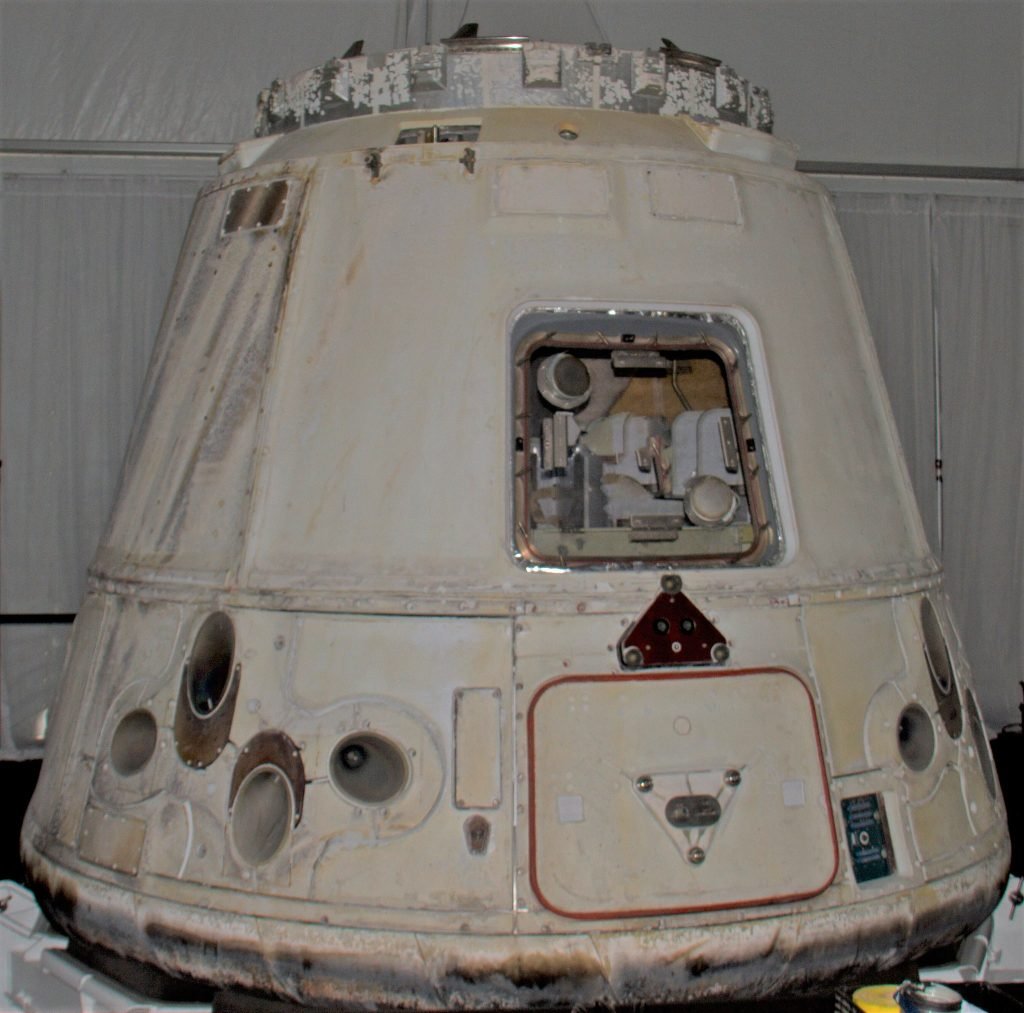
Space X “Dragon” Capsule after recovery. Image David @Flickr
Private orbital spaceflights will be much more expensive, but they are reducing over time. These will soon be available in future years via companies like Axiom and Space Adventures on the new 4-7 seat Space-X Crew Dragon, or 4-seat Boeing CST-100 Starliner orbital spacecraft, as well as via the current Russian 3-seat Soyuz capsules.
Looking at space tourism facts and costs, the early orbital ticket prices in the 2000s were approximately £15m per 10-day mission, expanding to £25m for later flights. These flights included trips via Soyuz for Dennis Tito, Mark Shuttleworth, Gregory Olsen, Anousheh Ansari, Charles Simonyi who flew twice, plus Guy Laliberte. In 2008, UK-born Richard Garriott de Cayeux, son of NASA astronaut Owen Garriott, flew to the ISS on Soyuz TMA-12.
With the new Space X and Boeing spacecraft, access to orbital space is likely to be relatively cheaper than via Soyuz which is currently costing NASA about £70m per flight, though a price competition should evolve over time.
Bigelow Aerospace has booked four space participant slots on the Crew Dragon for about £40m each. Boeing’s Starliner prices are expected to be more costly though, perhaps running at £55m per seat. More recently, the US company Axiom Space signed a contract with Space X to fly three fare-paying private astronauts, plus a pilot astronaut, on a mission to the ISS as early as 2021.
Space Adventures have suggested EVA possibilities for participants and lunar flights have been considered.
NASA are now more enthusiastic over “commercial astronaut” visitors using the ISS, with $35,000 a day accommodation prices being quoted, excluding flight access costs. Once the Crew Dragon and Starliner spacecraft provide a regular service with potentially seven crew per flight, so the ISS can be staffed by additional research crew and visitors, with additional accommodation pods being installed – the science research output will of course be boosted via easier crew access.
For the longer term, private human access to orbit and beyond should become even more affordable. An unknown for the late 2020s onwards is the Space-X “Starship” project – this is the 5,000 tonne two-stage reusable vehicle that Elon Musk expects may slash orbital access and deep-space flight prices. An early free-return lunar flight of the “Starship” is being proposed for Japanese billionaire Yusaku Maezawa, together with his intended crew of 6-8 “artists”.
Clearly, private spaceflight is going to reduce overall costs to the benefit of both space agencies and tourism companies.
Flight Safety
In terms of the benefits and drawbacks of space tourism and the worry that some space vehicles will be lost during the initial period of private spaceflight, many would consider this in the same terms as early flying and airline development which saw some losses of civil aircraft before technology enhancements provided today’s flight reliability and good airline safety records.
Many will recall the sad loss of NASA’s space shuttle Challenger in 1986 when astronaut-teacher Christa McAuliffe together with her six other crew members was killed during the vehicle explosion shortly after launch.
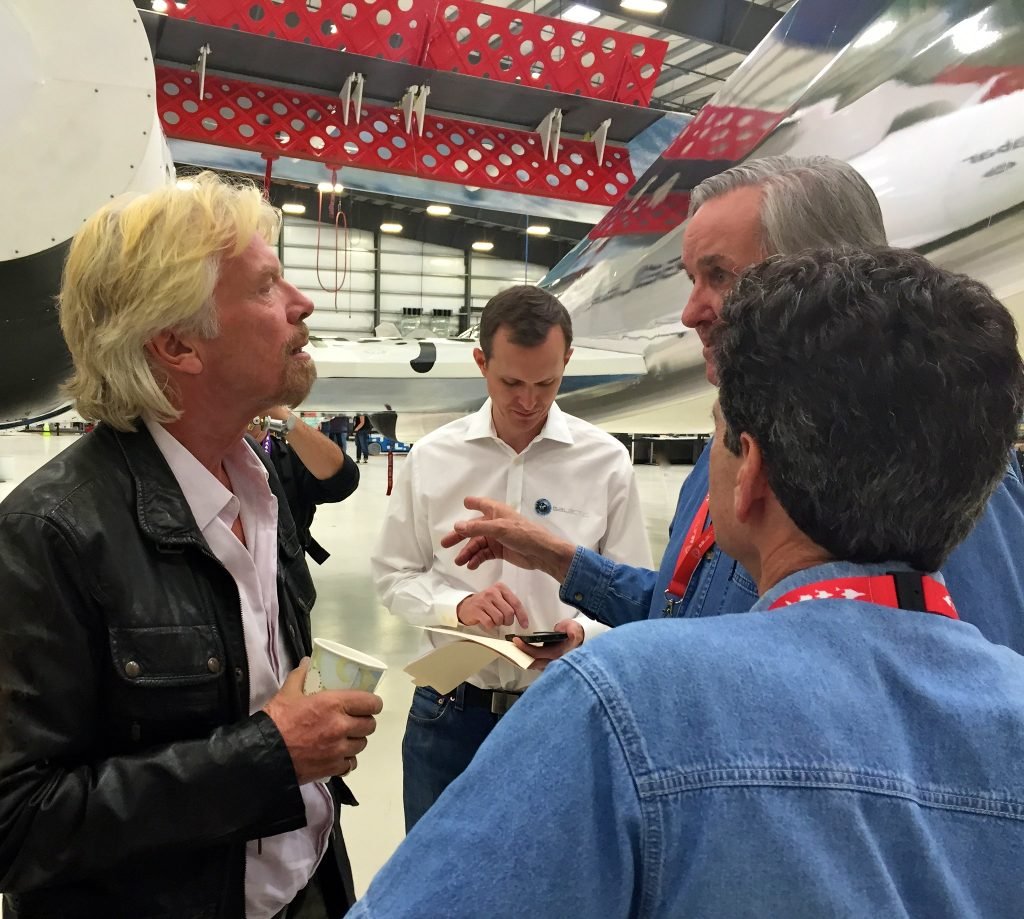
Richard Branson, here seen with designer Burt Rutan in 2014, has been determined to minimise the potential dangers of flights on the emerging SpaceShipThree spaceplane, taking on-board the lessons of early flight testing. (Image Steve Jurvetson).
In Oct. 2014 the Virgin Galactic sub-orbital VSS Enterprise spacecraft broke-up during a drop test and rocket burn and one of the two crew members died. SS2 design modifications were subsequently made and the company is determined to maximise passenger safety and enjoyment.
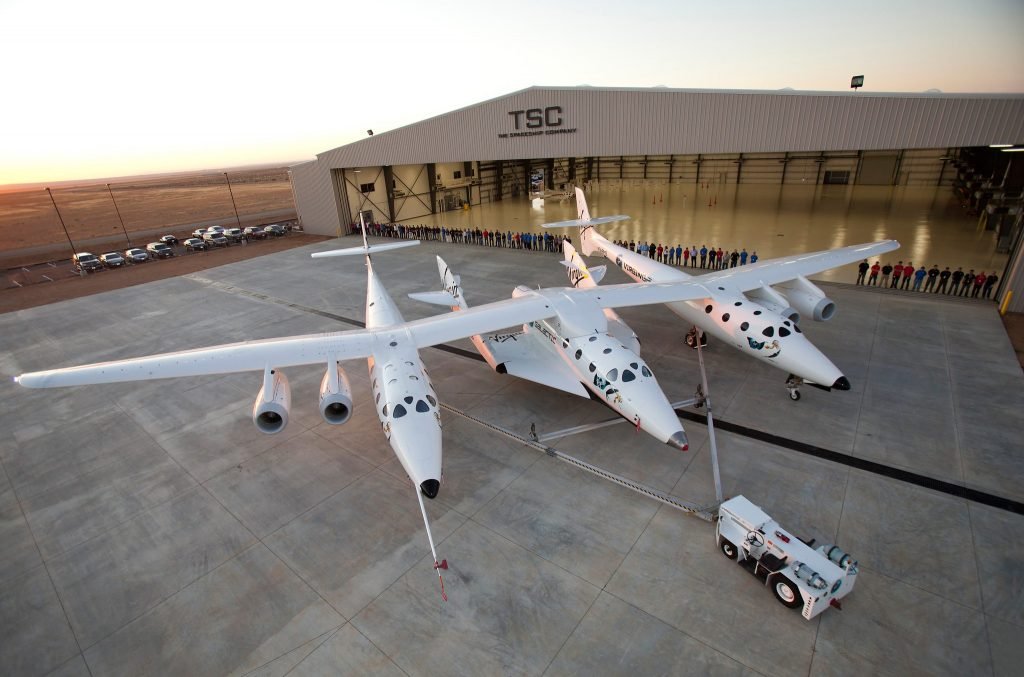
WhiteKnightTwo (VMS Eve) and SpaceShipTwo (VSS Enterprise – lost in 2014). Image Robert Sullivan
Blue Origin also lost a sub-orbital vehicle in April 2015 during an uncrewed test flight.
Safety is clearly a key consideration to the emerging tourist spaceflight companies and it can be expected that a measured step-by-step approach to flight testing will minimize these dangers and potential losses during the early years of private spaceflight.
Scientist-Astronaut Suborbital Flights
Why is space tourism important?
Science will benefit from space tourism and the reduced cost of access to space. For example, NASA recently announced the formation of its new Sub-orbital Crew Office (“Sub-C”), with Scott Colloredo as its Head. This new approach should boost access to space for an enlarged group of both space-agency and private scientist astronauts.
The new grouping will seek agreements with VG and Blue Origin for both astronaut training and microgravity science experiment flights – both companies have flown automated NASA experiments on test flights to date and have designed their cabin interiors to flexibly allow for future experiment racks, instead of passenger couches.
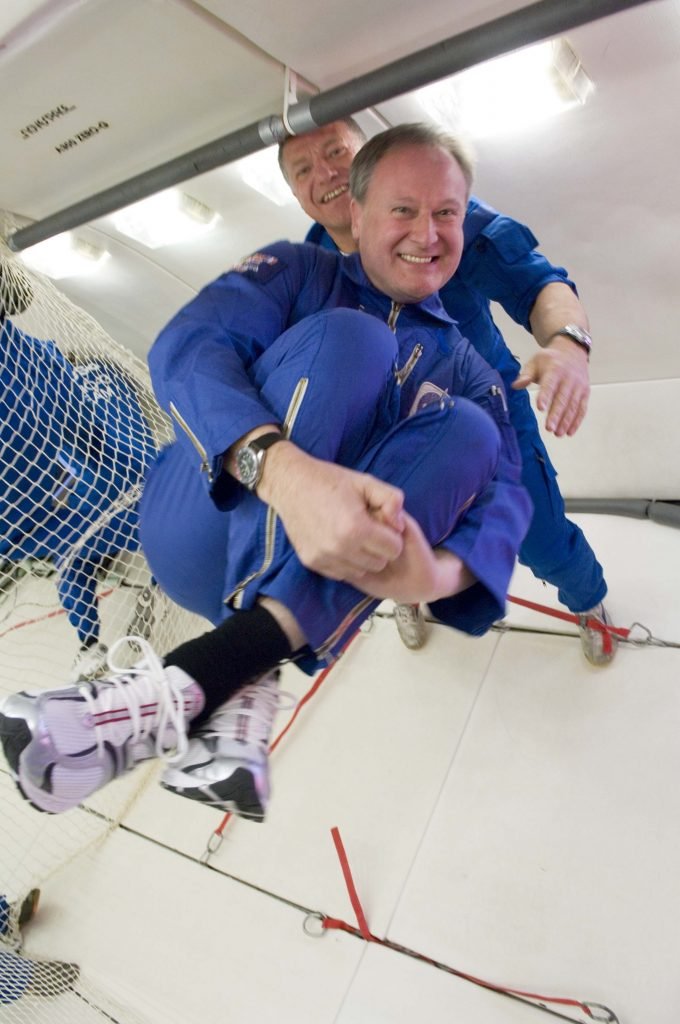
Aspiring private or government scientist flight participants who are seeking relatively low-cost 3-5 minute microgravity periods will consider these two approaches as very appealing, being well ahead of the 20 second periods of microgravity offered by parabola flights in aircraft. (Image: ESA/ Novespace)
The scientific benefits of future private access to the orbiting ISS space station’s research facilities, plus one day the Moon and Mars bases, will be strong. The significance of space tourism is that it should accelerate the development of space exploration generally.
Disadvantages of Space Exploration
A possibility is that the potential CO2 output from regular launch vehicles for enhanced space tourism may be a drawback to address. Carbon offset policies will be the likely solution to this issue, combined with the possible use of rocket bio-fuels and eventually in-situ resources from asteroids, the Moon, and Mars.
Considering the benefits and drawbacks of space tourism, it appears that an increase in Earth orbit activity will have some limited negative impact on “space traffic” and increase to some extent the dangers of orbital debris collisions.
However, the increase in space “debris” from orbital access for space tourism can be countered by mitigation and rocket stage recovery – Space X is seeking to recover much of their Falcon and Starship launchers and Virgin Galactic and Blue Origin are fully reusable systems, plus protocols on launch activity for the future will require more satellite and spacecraft recovery and de-orbiting measures.
Is Space Tourism a Good Idea?
Point to point high-speed rocket travel is a future benefit that will occur from sub-orbital space tourism – already Virgin Galactic is proposing a “SpaceShipThree” that will fly at high-speed/high altitudes for rapid intercontinental access across the globe, heralding a leap forward in rapid mass travel across the planet.
Disturbance from sonic booms resulting from space tourism will need to be limited for regular flight operations, as occurs for supersonic flights by civil and military aircraft over land.
If the early possible “teething” issues of flight safety, environmental, and traffic matters can be addressed and mitigated, the future of space tourism for a post-Covid world looks very promising. Economic benefits via reduced costs for space launchers, plus an acceleration of space technology development will be a very positive outcome from this tourism sector.
Images Jeff Foust, Robert Sullivan, Steve Jurvetson, David Creative Commons
4 Reasons we should Stop Sending Humans into Outer Space
Eugene Cernan was the last human being to step foot on the Moon. That was back in 1972, nearly 45 years ago. He died this past week, leaving behind a legacy of human spaceflight that has yet to receive its much-anticipated sequel.
No human has traveled more than a few hundred kilometers away from the surface of the Earth since 1972’s Apollo 17—back when the internet was still a theoretical idea, The Godfather Part I was the hottest new film of the year, and Elon Musk was only one year old.
Since the Apollo program formally ended in the early 1970’s, human spaceflight has never been the same.

An on-orbit rendezvous: the Lunar Module reunites with the Command Module after a successful 3-day mission down to the surface of the Moon. NASA, Apollo Project on Flickr.
Rather than continue on after the Moon landings and aim for Mars, the role of human astronauts in actual space exploration declined rather quickly. Today, astronauts aren’t doing any exploring. Instead, they’re employed doing menial experiments in the microgravity environment of the International Space Station (ISS), stranded in Low-Earth Orbit.
Most people would agree that we should continue sending humans up into space. But considering the current state of human spaceflight, I beg to differ. Here are a few reasons why we might want to stop sending humans out into space for the foreseeable future:
1. IT’S COSTLY
Despite its limited scope, NASA’s human spaceflight program gobbles up a huge portion of the agency’s budget—$3 billion annually just to continue operating the ISS. But the vast majority of the science being done in space is achieved by robots that cost pennies on the dollar (when compared to their human counterparts).
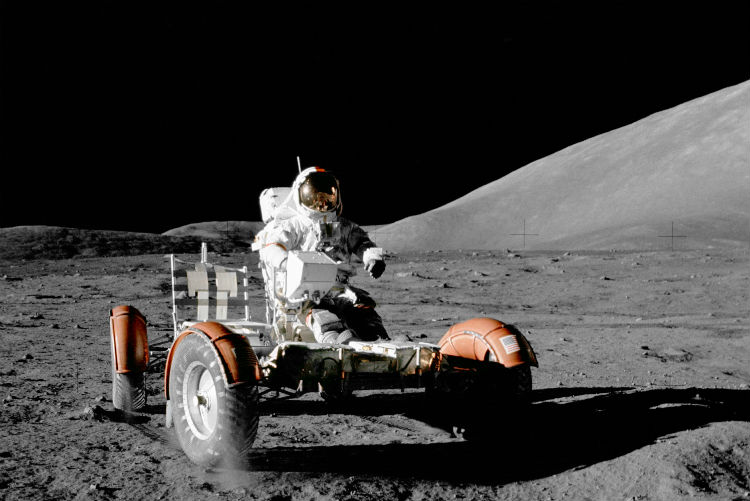
No cheap ride: Apollo 17 Commander Eugene Cernan knew how to get around the Moon in style. NASA.
The stuff that people really care about is the planetary science being done on the frontier: the rovers on Mars and the probes that have most recently visited Ceres, Comet 67p, Pluto, and Jupiter. And many more of these types of missions could be launched if NASA were to slash its human spaceflight budget.
Here on Earth, we employ robots in a variety of areas where it makes financial sense to do so—underwater exploration robots for ocean science, automated balloons for atmospheric science, combat drones for warfare, and a multitude of robotic machines for manufacturing. And when it comes to exploring space, sending robots can be several orders of magnitude cheaper than sending humans.
When astronauts first stepped foot on the Moon in the 60’s and 70’s, they were doing cutting-edge science. Today, we have robots like Curiosity on the surface of Mars, essentially playing the role of a field geologist on another planet. While humans on Mars would be able to accomplish more rigorous science at a faster pace, Curiosity only cost $2.5 billion.
Sending humans to Mars is estimated to cost tens of billions of dollars (at the low end), and the added complexity of living astronauts makes for a lot of excess room for failure.
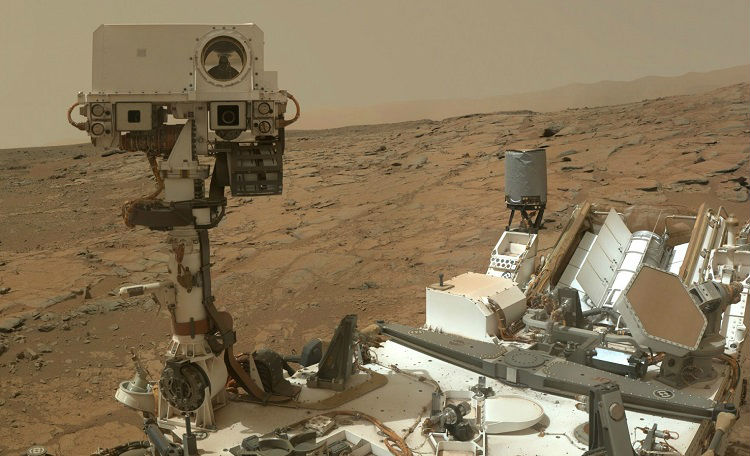
The Curiosity rover on Mars: “did somebody say ultra good-looking and cost-effective robot!?” NASA/JPL-Caltech/MSSS.
The lean towards robots for space exploration is even more pronounced when considering timelines. Flying to the Moon only takes a couple of days; going to Mars takes 9 months. Jupiter can take 5 years or longer, depending on how big the launch vehicle is. And for New Horizons, getting to Pluto took 10 years. Humans can’t wait that long; robots can.
While the benefits of sending a human mission to Mars would be colossal, arranging the budget to do so is another matter. And for the lofty price-tag that it would entail, we could potentially launch dozens of cutting-edge robotic probes, each capable of collecting useful, knowledge-enriching scientific data.
That being said, cancelling NASA’s human spaceflight program as it stands today wouldn’t be the worst idea ever. There aren’t many discoveries being made on board the ISS, and the money being spent up there might be better spent on robots.
Instead of funding the space station, we could have the funds to send probes to Venus, orbiters and landers to the moons of Jupiter, a followup to Cassini that could also explore Enceladus and Titan, and a new mission that could revisit Uranus and Neptune (considering it’s been around 30 years since Voyager 2 first visited).
Just cutting the upkeep cost of the ISS for half a decade could provide enough funding to accomplish most of these things decently well. Besides, there’s a pretty good argument to be had that the ISS isn’t worth maintaining anyways!
2. IT’S DANGEROUS
Spaceflight is inherently risky, for both astronauts and robots alike. 3.3% of all the people who have gone into space have died doing so. By comparison, only 0.07% of aircraft pilots and 0.016% of police officers in the United States will die on the job.
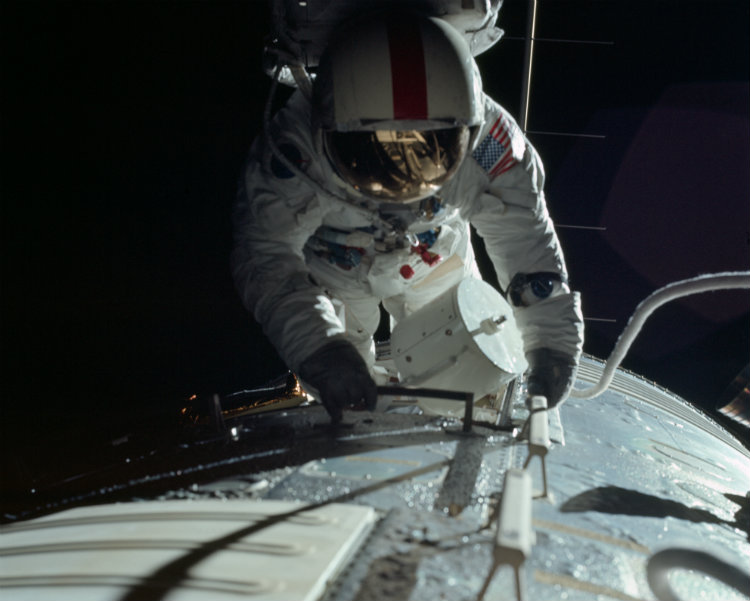
In deep-space while en-route back to Earth, Apollo astronauts had to step outside in order to retrieve film cassettes from the Command Module’s external cameras. NASA.
If we’re going to subject human beings to the inherent risks of spaceflight, it should be for a really good reason. We should respect another human’s life to the extent that we wouldn’t seek to endanger that life on some trivial mission.
The 1986 Challenger shuttle disaster is a good example of our failure to do so. When the shuttle exploded 73 seconds after liftoff, it claimed the lives of seven astronauts (one of whom was a citizen schoolteacher who had no business being there). Its mission? To deploy a communications satellite on-orbit and conduct other simple experiments and tasks.
Then, in 2003, the Columbia shuttle disaster claimed another seven lives. Its mission was to test an extended-duration module (sort of like a battery pack) to allow longer-duration spaceflight, a “SpaceHab Research Module,” and a bunch of other small scientific experiments. I don’t think anyone could argue that the scientific knowledge to be gained from this particular mission was worth the seven lives it ended up costing.
I’m not saying that human spaceflight is too dangerous and that we shouldn’t be sending humans into space at all. I’m just saying that, until space travel can be made as safe as air travel, sending humans into space should only be done for causes that are worthwhile and beneficial.
3. IT’S NOT WORTHWHILE
It could be argued that the only human spaceflight missions to ever measurably increase our knowledge of the cosmos were the six Apollo missions that landed on the Moon.
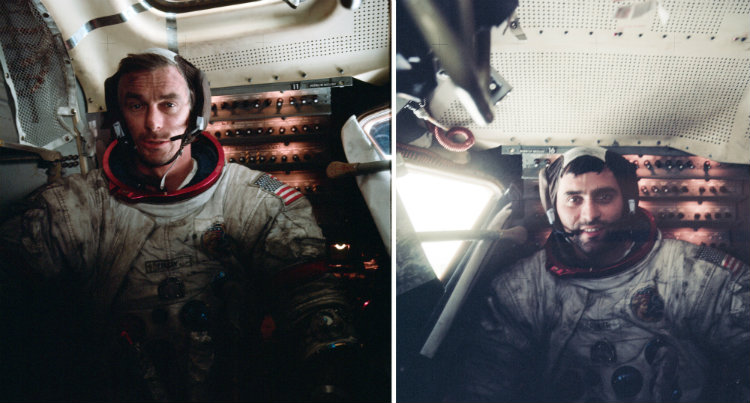
Some downtime: in between Moonwalks, Eugene Cernan and Harrison Schmitt pose for photos inside of the Lunar Module. NASA.
The Apollo missions returned hundreds of kilograms worth of moon rocks to Earth and gathered a treasure trove of data pertaining to the lunar environment. Nearly fifty years later, the science returned by the Apollo program is still the most comprehensive scientific data we’ve ever collected beyond Earth.
But today in 2017, we’re not learning anything significant by having astronauts living and working in space for extended periods of time. Instead, we’re floating quietly in microgravity—watching the sun rise and set 18 times per day, whirling around the Earth at 27,000 Kilometers per hour. And I’m sure none of that is nearly as good as it sounds.
Comparatively, Apollo should be meticulously studied as the archetypal human space program. A lofty target, a useful scientific goal, and a stepping-stone approach that saw each subsequent mission pushing the frontier back even further. That’s exactly the sort of thing that human civilization needs here at the dawn of the 21st century.
And there are multiple worthy targets out there. Humans could be sent to visit an asteroid, to establish a long-duration base on the Moon, or to explore Mars and its small moons. These are not simple endeavors, and they wouldn’t be possible on the shoestring budget of the ISS; they would be to be costly, complicated, and risky, but ultimately beneficial—both scientifically and culturally.
And this brings us to the final point:
4. THERE’S NO LONG-TERM GOAL
Putting humans on the Moon was never intended to be easy. It was an extreme long-shot, and one that actually paid off. The catch? It took a lot of organized effort, and cost a lot of money.
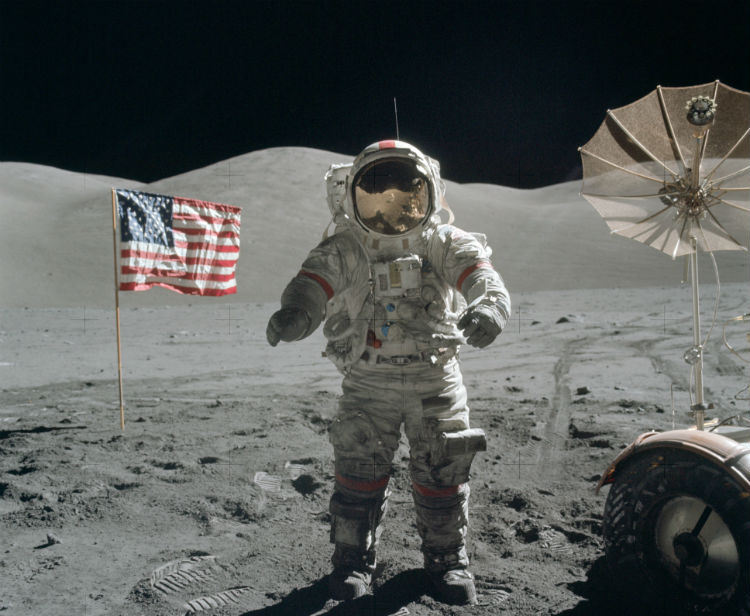
Patriotism helped get us to the Moon. Here, Eugene Cernan poses next to the American Flag on the lunar surface. NASA.
Today at NASA, there are no active long-term goals. The agency often reiterates that its on a “Journey to Mars,” but they’ve yet to lay out any detailed plans for how they’re actually going to get there.
With changing administrations and a lack of oversight, the United States space program has been in limbo for decades. Most recently, George W. Bush wanted humans to return to the Moon, and so NASA began building the Orion capsule and SLS rocket to do so. Obama later scrapped those plans, and said that NASA would instead aim for Mars.
Now, a new president is about to enter into the fray. NASA hasn’t made any concrete plans as to how it’s going to use its next-generation Orion space capsule and SLS rocket, so the agency’s future direction is shrouded in uncertainty.
But what is certain is that NASA is committed to maintaining the ISS until ‘at least’ 2024—at which point it will have been 55 years since Neil Armstrong and Buzz Aldrin walked on the Moon for the first time, and 52 years since the last human beings had traveled beyond Low-Earth Orbit.
With the golden era of human spaceflight now a long way behind us, everything has the appearance of stagnation about it. In order to move forward, we need to adopt a shared goal and a detailed method of achieving it—perhaps even as a global community.
Until then, I don’t think it’s ethically responsible to continue sending humans up there. Space is hard, and some deaths along the way are probable. That said, once we do start sending astronauts out to actually explore the cosmos once again, let’s make our efforts really count.
Comments
Sign in or become a Bad Philosopher member to join the conversation.
Just enter your email below to get a log in link.
The Benefits and Drawbacks of Space Tourism – A 2021 Guide
“Space travel is returning to where it started: with maverick pioneers dreaming of journeys to orbit and beyond, some carrying out rocket experiments in their own backyards. The rise of citizen astronauts has already begun.”
Arthur C Clarke Forward to SpaceShipOne: An Illustrated History 2008
Since private individuals first started visiting the International Space Station (ISS) in 2001 via the Space Adventures company, the dream of being able to travel into space for the masses is slowly becoming closer to reality.

So far seven space tourists have gone into orbit on Russian Soyuz spacecraft for a week-long stay on the ISS 400km above the Earth and for the future that number will expand. During 2021 both Sir Richard Branson of Virgin Galactic and Jeff Bezos of Blue Origin flew into sub-orbit “near-space”, with Branson reaching over 50 miles altitude in the “Unity” SpaceShipTwo vehicle and Bezos achieving over 62 miles height in the New Shepard capsule.
In the USA, 50 miles is the set definition of where “space” begins, whilst internationally it is considered to be at the 62 mile (100km) “Karman Line” height Others will be following as new orbital spacecraft come on-stream and the ticket price is gradually lowered.
In September 2021, Space X successfully flew the three-day “Inspiration 4” private orbital mission into Earth orbit. Paid for by the lead private astronaut Jared Isaacman, this $200m fund-raising and research flight sent four private astronauts, or “space participants” as some like to be called, into a 366 mile (590km) high orbit – this was well above the 250 mile (400km) orbiting height of the ISS.
Also, in late 2021 Blue Origin flew the actor William Shatner – “Captain Kirk” in the original Star Trek series – to sub-orbit space onboard the New Shepard rocket. This was followed by the “private astronaut” visit of Russian actress Yulia Peresild to the ISS on a Soyuz flight for movie filming – for the future, US actor Tom Cruise has been mentioned as another possible visitor to the ISS for filming purposes.
The astronauts spent their time enjoying zero-g, fully experiencing the thrill of being in space and taking in the extraordinary views of the Earth through a glass-domed “cupola” positioned at the tip of their cone-shaped Crew Dragon spacecraft “Resilience”. One crew member, Hayley Arcenaux, at 29 yrs. old became the youngest US astronaut to go into space. The Crew Dragon spacecraft flew entirely automatically, although the crew and ground-control could have intervened if the flight was not proceeding nominally.
As the first purely private orbital spaceflight, this history-making mission has paved the way for future non-government-sponsored astronauts to go into space – it showed that normal “people in the street” can train for a few weeks, launch, and experience spaceflight safely. Similar to the way that the 1920-30s gradually saw the introduction of safer and more reliable airliner travel for ordinary citizens, so the coming decades will see an accelerating expansion of regular orbital “space tourism” with no essential requirement for outstanding fitness or advanced astronaut skills for the participants.
In the near future, thousands more private astronauts should be going into sub-orbital space too, traveling to 80-100km altitudes, via Virgin Galactic’s SpaceShipTwo spaceplanes and Blue Origin’s New Shepard rockets.
But what are the benefits and drawbacks of space tourism – is space tourism a good idea?
Significance of Space Tourism
A key benefit of space tourism is that it offers a new leisure industry service by meeting the pent-up demand of space travel for individuals. It allows aspiring private astronauts access to an “ultimate trip” beyond the Earth’s atmosphere – its economic and social consequences are comparable to those resulting from the development of civil jet airliners like the Boeing 747 which opened up mass and affordable international travel from the late 1960s.
Over sixty years of continuous human spaceflight, out of 7.3 billion people on the planet just over 600 have been into space. And apart from the seven Space Adventure “space participants”, almost all of these astronauts have been funded by governments as part of ongoing space program projects.
The 2002 book “Spaceflight Revolution” by David Ashford of Bristol Spaceplanes pointed out that the potential demand for human spaceflight is very large. He noted that market research in Japan and Canada in the late 1990s suggested that at that time approximately 7.5% of the industrialized population of the world apparently wanted to experience a spaceflight at least once in their lifetime. A resulting market demand estimate of at least one million space passengers flying per year could be concluded from those studies – this was assuming of course that this spaceflight could be affordable and was relatively safe.
The emerging new space vehicles, the Space-X Crew Dragon and the Boeing CST-100 Starliner for orbital access and the Virgin Galactic’s (VG) SpaceShipTwo (SS2) and Blue Origin’s New Shepard spacecraft for suborbital flights, will soon provide a long-anticipated breakthrough for aspiring astronaut explorers, scientists, and private “space participants”.
Interested in learning to fly a microlight? Check out this article, here.
Why is Space Tourism Important?
Why do so many people want to travel into space and where does that desire come from? Are there advantages and disadvantages of space research?
Many believe that space travel is ingrained into the human psyche, as part of a natural desire to explore and find out more about our surroundings in the wider Cosmos.
The private astronaut Anousheh Ansari, who flew to the ISS on Soyuz TMA-9 via the Space Adventures company in 2006, describes in her book “My Dream of Stars” how as a child she would sleep out under the stars on family camping trips in Iran – from that point she became gripped by the fascination, wonder and deep desire of traveling into the Cosmos.
The desire for the “overview effect” of seeing the beauty and significance of the planet from space drives many aspiring astronauts. Frank White coined this phrase in the 1980’s – it applies to the many astronauts who have noted this emotion, which for some is a transformative experience….Beth Moses, suborbital astronaut and Chief Astronaut Instructor at Virgin Galactic describes this, saying:“ The view is the star of the show”.
Whatever the individual reasons for a personal spaceflight experience, many believe that the benefits of space tourism will be strong – there will be a significant lowering of the cost of access to space, enabling a more rapid and viable human space exploration process and possible eventual colonization of parts of the Moon, Mars and the Solar System, with significant benefits to the world’s economy, as well as to science research and technological progress.
How Much Is a Ticket To Space?
In terms of future prices, the emerging sub-orbital flights available with Virgin Galactic and Blue Origin will cost about £200-300,000 a ticket. This is obviously a low figure when compared to the high costs of spaceflight offered by the early days of the space program approach that government space agencies have established.

Space X “Dragon” Capsule after recovery. Image David @Flickr
Private orbital spaceflights will be much more expensive, but they are reducing over time. These will soon be available in future years via companies like Axiom and Space Adventures on the new 4-7 seat Space-X Crew Dragon, or 4-seat Boeing CST-100 Starliner orbital spacecraft, as well as via the current Russian 3-seat Soyuz capsules.
Looking at space tourism facts and costs, the early orbital ticket prices in the 2000s were approximately £15m per 10-day mission, expanding to £25m for later flights. These flights included trips via Soyuz for Dennis Tito, Mark Shuttleworth, Gregory Olsen, Anousheh Ansari, Charles Simonyi who flew twice, plus Guy Laliberte. In 2008, UK-born Richard Garriott de Cayeux, son of NASA astronaut Owen Garriott, flew to the ISS on Soyuz TMA-12.
With the new Space X and Boeing spacecraft, access to orbital space is likely to be relatively cheaper than via Soyuz which is currently costing NASA about £70m per flight, though a price competition should evolve over time.
Bigelow Aerospace has booked four space participant slots on the Crew Dragon for about £40m each. Boeing’s Starliner prices are expected to be more costly though, perhaps running at £55m per seat. More recently, the US company Axiom Space signed a contract with Space X to fly three fare-paying private astronauts, plus a pilot astronaut, on a mission to the ISS as early as 2021.
Space Adventures have suggested EVA possibilities for participants and lunar flights have been considered.
NASA are now more enthusiastic over “commercial astronaut” visitors using the ISS, with $35,000 a day accommodation prices being quoted, excluding flight access costs. Once the Crew Dragon and Starliner spacecraft provide a regular service with potentially seven crew per flight, so the ISS can be staffed by additional research crew and visitors, with additional accommodation pods being installed – the science research output will of course be boosted via easier crew access.
For the longer term, private human access to orbit and beyond should become even more affordable. An unknown for the late 2020s onwards is the Space-X “Starship” project – this is the 5,000 tonne two-stage reusable vehicle that Elon Musk expects may slash orbital access and deep-space flight prices. An early free-return lunar flight of the “Starship” is being proposed for Japanese billionaire Yusaku Maezawa, together with his intended crew of 6-8 “artists”.
Clearly, private spaceflight is going to reduce overall costs to the benefit of both space agencies and tourism companies.
Flight Safety
In terms of the benefits and drawbacks of space tourism and the worry that some space vehicles will be lost during the initial period of private spaceflight, many would consider this in the same terms as early flying and airline development which saw some losses of civil aircraft before technology enhancements provided today’s flight reliability and good airline safety records.
Many will recall the sad loss of NASA’s space shuttle Challenger in 1986 when astronaut-teacher Christa McAuliffe together with her six other crew members was killed during the vehicle explosion shortly after launch.

Richard Branson, here seen with designer Burt Rutan in 2014, has been determined to minimise the potential dangers of flights on the emerging SpaceShipThree spaceplane, taking on-board the lessons of early flight testing. (Image Steve Jurvetson).
In Oct. 2014 the Virgin Galactic sub-orbital VSS Enterprise spacecraft broke-up during a drop test and rocket burn and one of the two crew members died. SS2 design modifications were subsequently made and the company is determined to maximise passenger safety and enjoyment.

WhiteKnightTwo (VMS Eve) and SpaceShipTwo (VSS Enterprise – lost in 2014). Image Robert Sullivan
Blue Origin also lost a sub-orbital vehicle in April 2015 during an uncrewed test flight.
Safety is clearly a key consideration to the emerging tourist spaceflight companies and it can be expected that a measured step-by-step approach to flight testing will minimize these dangers and potential losses during the early years of private spaceflight.
Scientist-Astronaut Suborbital Flights
Why is space tourism important?
Science will benefit from space tourism and the reduced cost of access to space. For example, NASA recently announced the formation of its new Sub-orbital Crew Office (“Sub-C”), with Scott Colloredo as its Head. This new approach should boost access to space for an enlarged group of both space-agency and private scientist astronauts.
The new grouping will seek agreements with VG and Blue Origin for both astronaut training and microgravity science experiment flights – both companies have flown automated NASA experiments on test flights to date and have designed their cabin interiors to flexibly allow for future experiment racks, instead of passenger couches.

Aspiring private or government scientist flight participants who are seeking relatively low-cost 3-5 minute microgravity periods will consider these two approaches as very appealing, being well ahead of the 20 second periods of microgravity offered by parabola flights in aircraft. (Image: ESA/ Novespace)
The scientific benefits of future private access to the orbiting ISS space station’s research facilities, plus one day the Moon and Mars bases, will be strong. The significance of space tourism is that it should accelerate the development of space exploration generally.
Disadvantages of Space Exploration
A possibility is that the potential CO2 output from regular launch vehicles for enhanced space tourism may be a drawback to address. Carbon offset policies will be the likely solution to this issue, combined with the possible use of rocket bio-fuels and eventually in-situ resources from asteroids, the Moon, and Mars.
Considering the benefits and drawbacks of space tourism, it appears that an increase in Earth orbit activity will have some limited negative impact on “space traffic” and increase to some extent the dangers of orbital debris collisions.
However, the increase in space “debris” from orbital access for space tourism can be countered by mitigation and rocket stage recovery – Space X is seeking to recover much of their Falcon and Starship launchers and Virgin Galactic and Blue Origin are fully reusable systems, plus protocols on launch activity for the future will require more satellite and spacecraft recovery and de-orbiting measures.
Is Space Tourism a Good Idea?
Point to point high-speed rocket travel is a future benefit that will occur from sub-orbital space tourism – already Virgin Galactic is proposing a “SpaceShipThree” that will fly at high-speed/high altitudes for rapid intercontinental access across the globe, heralding a leap forward in rapid mass travel across the planet.
Disturbance from sonic booms resulting from space tourism will need to be limited for regular flight operations, as occurs for supersonic flights by civil and military aircraft over land.
If the early possible “teething” issues of flight safety, environmental, and traffic matters can be addressed and mitigated, the future of space tourism for a post-Covid world looks very promising. Economic benefits via reduced costs for space launchers, plus an acceleration of space technology development will be a very positive outcome from this tourism sector.
Images Jeff Foust, Robert Sullivan, Steve Jurvetson, David Creative Commons
Source https://aboutaerospace.com/the-benefits-and-drawbacks-of-space-tourism/
Source https://badphilosopher.com/stop-sending-people-to-space/
Source https://aboutaerospace.com/the-benefits-and-drawbacks-of-space-tourism/